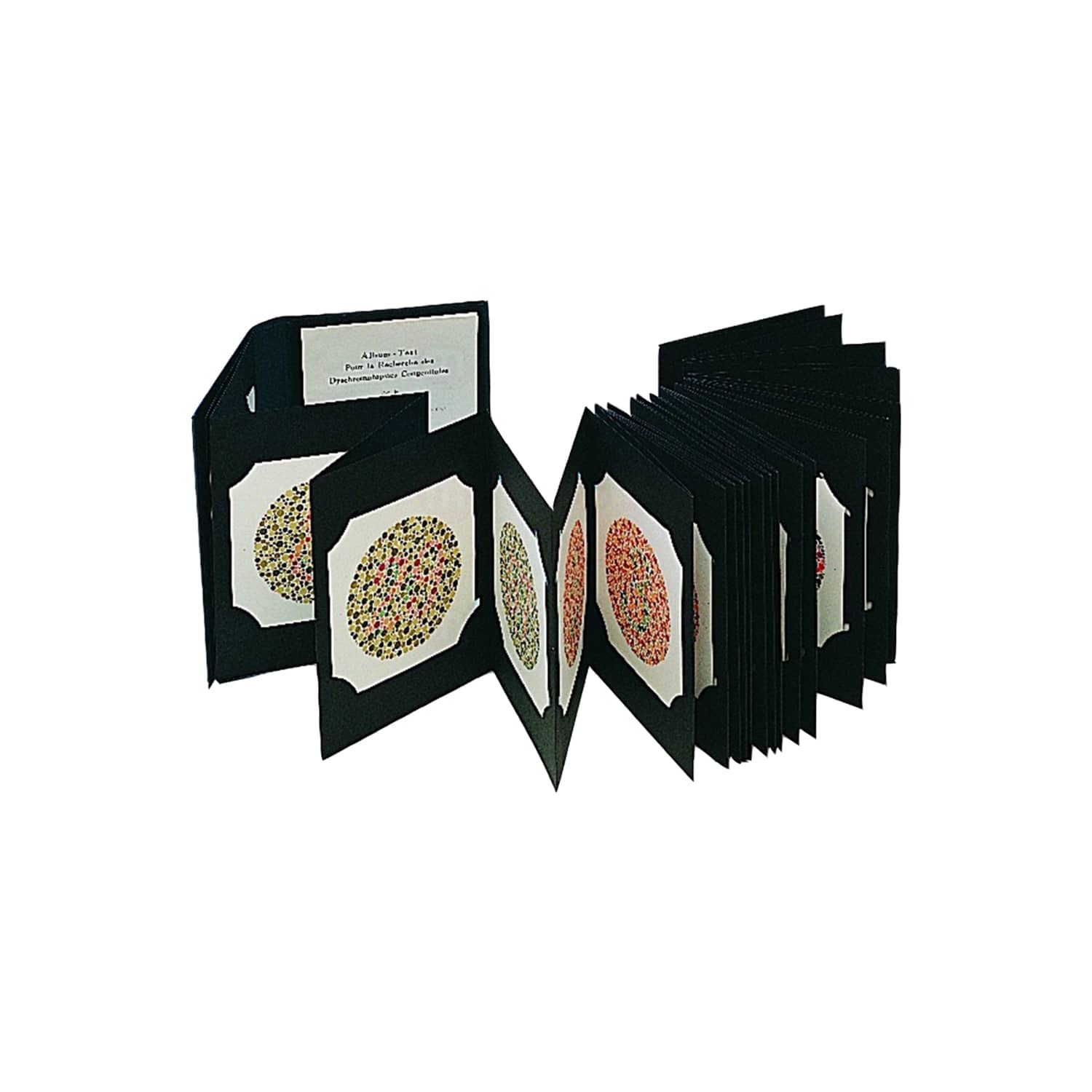Ishihara test
219,00€ – 299,00€ excluding tax
Ishihara test
- Album of 38 or 14 plates
- Identifies types of dyschromatopsia
- Simple and reliable
This test effectively detects color vision deficiencies
- SKU: 88877-09
- Categories: Ishihara test
Additional information
| Weight | 0,500 kg |
|---|---|
| Number of boards | 38 Plates, 14 Plates |
What is the ishihara test?
The Ishihara test is a test of screening for color vision abnormalities, also known as color blindness. It was developed by Japanese physician Shinobu Ishihara in 1917 and is one of the most commonly used tests to diagnose color blindness.
The Ishihara test consists of a series of plates containing dots of different colors and sizes that form hidden numbers or symbols. People taking the test must identify numbers or symbols from the colored dots they see on each plate.
The test is usually administered by placing the plates at a specific distance in front of the person being tested and asking the person to examine them individually. People with normal color vision will be able to recognize the numbers or symbols clearly visible on each plate. On the other hand, people with color blindness will have difficulty seeing certain numbers or symbols due to their inability to distinguish certain colors.
The Ishihara test is widely used in color vision screening examinations, especially in professions where accurate color perception is important, such as aviation, trucking, military, police and artistic professions. It is important to note that the Ishihara test is not the only test used to diagnose color blindness, and that there are other, more comprehensive tests to assess color vision.
Why do the ishihara test?
The Ishihara test is performed to assess a person's color perception and detect possible abnormalities in color vision, also known as color blindness. Here are some reasons why the Ishihara test is performed:
- Color blindness screening : The Ishihara test is primarily used as a screening tool to detect color blindness in individuals. Color blindness is a condition in which a person has impaired color perception, often due to a genetic abnormality in the photoreceptors of the eye.
- Professional requirements : In some professions, accurate color perception is essential to ensure safety and performance. Therefore, the Ishihara test is often administered to people applying for jobs in sectors such as aviation, trucking, military, police, artistic professions, etc.
- Medical exam : Doctors may recommend the Ishihara test as part of a general medical exam to evaluate a person's color vision and detect any abnormalities that may require medical monitoring or additional interventions.
- Visual health check : The Ishihara test can also be used to monitor a person's visual health over time. Changes in Ishihara test results may indicate color vision problems or other eye conditions that require medical attention.
In summary, the Ishihara test is performed to assess a person's color perception, detect possible color vision abnormalities, and ensure that individuals are capable of fulfilling job requirements requiring accurate color perception. colors.

